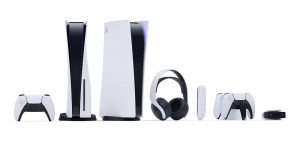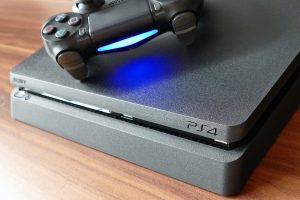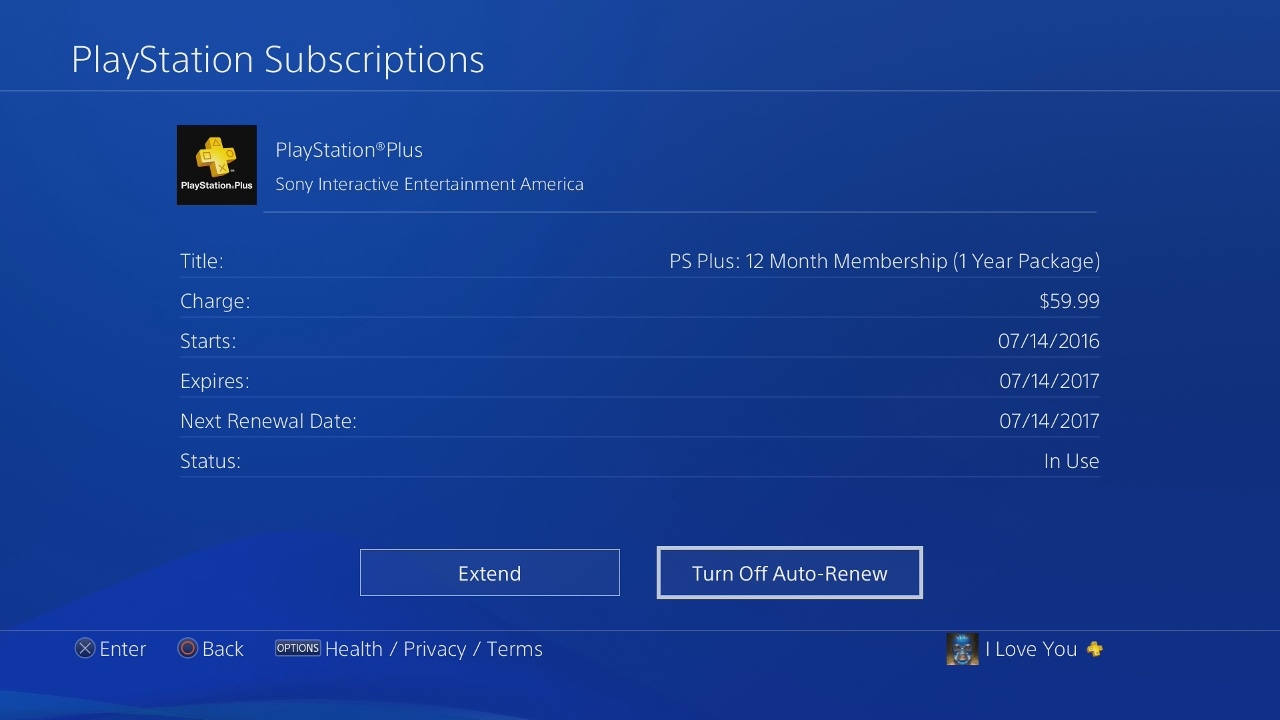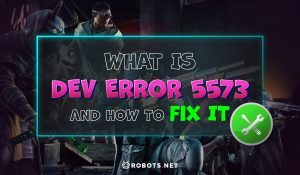Introduction
Welcome to the world of PlayStation! Whether you’re a devoted gamer or a casual player, keeping your PlayStation console up-to-date with the latest software is crucial to ensure optimal performance and access to new features. In some cases, you may encounter issues with your console that require a complete reinstallation of the system software. To successfully reinstall the software, the first step is to download the update file from the official PlayStation website.
This step-by-step guide will walk you through the process of downloading the update file for reinstallation from PlayStation.com. By following these instructions, you’ll be able to easily and efficiently get your PlayStation console back up and running in no time.
Please note that this guide is applicable to all PlayStation models, including the PlayStation 4 (PS4), PlayStation 5 (PS5), and PlayStation 4 Pro. Make sure you have a stable internet connection and a USB storage device available before proceeding.
Now, let’s dive into the steps you need to follow to download the update file for reinstallation from PlayStation.com!
Step 1: Visit the PlayStation website
The first step in downloading the update file for reinstallation is to visit the official PlayStation website. Open your preferred web browser and enter “www.playstation.com” in the address bar.
Once you’ve arrived at the PlayStation website, take a moment to familiarize yourself with the layout and navigation options. The website provides a wealth of information about PlayStation consoles, games, accessories, and support.
To proceed with downloading the update file, locate the support tab or navigate to the support section of the website. This section typically contains helpful resources and troubleshooting guides for PlayStation products.
Click on the support tab, and you will be redirected to a new page dedicated to providing assistance to PlayStation users. On this page, you’ll find a variety of support options and tools to help you troubleshoot any issues you may encounter with your console.
Take a moment to explore the different support options available, such as FAQs, forums, live chat support, and manuals. While these resources may not be directly related to downloading the update file, they can be valuable in resolving any additional issues you may have with your PlayStation console.
Once you’re familiar with the support page, it’s time to move on to the next step: selecting your PlayStation console model.
Step 2: Go to the PlayStation support page
After accessing the PlayStation website, it’s time to navigate to the support page specifically designed to assist users with their PlayStation consoles. On the homepage or navigation menu, look for a tab or link that says “Support” or “Help.” Click on it to proceed.
The PlayStation support page serves as the central hub for all technical assistance related to your console. Here, you’ll find comprehensive information, guides, and resources to address a wide range of issues and inquiries.
Upon entering the support page, take a moment to familiarize yourself with the layout. You’ll typically find categories or sections divided to address different aspects of PlayStation support, such as hardware, software, troubleshooting, and system updates.
It’s important to note that each PlayStation model may have its own specific support section. Make sure to select the appropriate console model that you own or are seeking assistance with.
In most cases, you’ll find a dropdown menu or a series of icons representing different PlayStation console models. Locate your console model and click on it to proceed to the relevant support section.
Once you’re in the support section dedicated to your specific PlayStation console, you will have access to a wealth of information related to your device. This includes user guides, troubleshooting steps, frequently asked questions, and software update resources.
Now that you’ve successfully reached the PlayStation support page, it’s time to move on to the next step: selecting the appropriate update file for your console model.
Step 3: Select your PlayStation console model
Once you’re on the support page dedicated to PlayStation consoles, it’s time to select the specific model of your PlayStation console. This step ensures that you download the correct update file that is compatible with your device.
Look for a section or menu where you can identify your PlayStation console model. This may be in the form of a dropdown menu, clickable icons, or a list of available models. Click on the option that corresponds to your console.
If you’re unsure about the model of your PlayStation console, there are a few ways to identify it. Firstly, you can check the physical console itself for any labeling or markings indicating the model number. Alternatively, you can access the settings menu on your PlayStation console and navigate to the “System Information” section, where the model information will be displayed.
Once you have selected your console model, you’ll be directed to a page that contains specific information and resources related to that model. Here, you’ll find various support articles, guides, and downloads tailored to your PlayStation console.
Take a moment to browse through the available resources and familiarize yourself with the content. This will help you navigate through the next steps more easily and find the necessary update file for reinstallation.
With your PlayStation console model now selected, it’s time to move on to the next step: choosing the appropriate update file.
Step 4: Choose the appropriate update file
Once you have selected your PlayStation console model on the support page, it’s time to choose the appropriate update file for your specific console. The update file contains the necessary software to reinstall and update your PlayStation system.
On the support page for your console model, look for a section or a link specifically related to software updates or system software. Click on it to access the available update files.
Here, you’ll find a list of the most recent software updates for your PlayStation console. These updates are essential to ensure the stability, security, and performance of your device.
Pay attention to the version numbers of the updates, as well as any additional information provided about their contents, improvements, and fixes. Choosing the latest update is typically recommended, as it includes the most recent enhancements and bug fixes.
Additionally, ensure that you select the update file that is specific to your PlayStation console model. Using an incorrect update file can cause compatibility issues and may potentially harm your console.
Read through the available update files carefully and select the one that matches both the version number and the model of your PlayStation console. Look for a download button or link associated with the chosen update file.
Some consoles may have multiple versions of the update file available, such as the standard update file and a full system software reinstall file. If you’re experiencing significant issues with your console, it’s recommended to opt for the full system software reinstall file. However, if you’re only looking to update your software without performing a complete reinstallation, choose the standard update file.
With the appropriate update file selected, it’s time to move on to the next step: downloading the update file to your computer.
Step 5: Download the update file to your computer
After choosing the appropriate update file for your PlayStation console, it’s time to download the file to your computer. By doing so, you will have the necessary software ready to perform the reinstallation process.
On the page where you selected the update file, locate the download button or link associated with the chosen file. Click on it to initiate the download process.
Depending on your web browser settings, you may be prompted to choose a location on your computer to save the update file. It’s recommended to save the file in an easily accessible location, such as the desktop or a dedicated folder.
The download time can vary depending on the size of the update file and the speed of your internet connection. It’s important to ensure a stable and uninterrupted internet connection during the download process to avoid any interruptions or corruption of the update file.
While the update file is downloading, it’s essential to refrain from interrupting or canceling the download process. Doing so may result in an incomplete or corrupted file, which can cause issues during the reinstallation process.
Once the download is complete, double-check the file to ensure it matches the expected size and version number. It’s always a good practice to verify the integrity of the downloaded file to avoid any potential issues during the reinstallation.
Congratulations! You have successfully downloaded the update file for your PlayStation console. In the next step, we will prepare a USB storage device to transfer the update file.
Step 6: Prepare a USB storage device
Before transferring the update file to your PlayStation console, you’ll need to prepare a USB storage device that will serve as the medium for the file transfer. The USB storage device will need to meet certain requirements to ensure compatibility and successful installation.
Firstly, ensure that the USB storage device has enough free space to accommodate the update file. The required amount of free space will vary depending on the size of the update file, which is typically mentioned on the support page where you downloaded the update file.
Next, format the USB storage device to the FAT32 or exFAT file system. This can be done using your computer’s built-in disk management tools or by using third-party formatting software. Note that formatting the USB storage device will erase any existing data, so make sure to back up any important files before proceeding.
It’s also recommended to use a USB storage device with a capacity of at least 1GB to ensure sufficient space for the update file and any additional files needed during the reinstallation process.
Once you have prepared the USB storage device, connect it to your computer using a USB cable. Make sure the device is recognized by your computer and is accessible through the file explorer or disk management tools.
Before moving on to the next step, it’s a good idea to create a dedicated folder on the USB storage device to store the update file. This will help keep the file organized and easily accessible during the reinstallation process.
In the next step, we will transfer the update file from your computer to the USB storage device. Make sure both the computer and USB storage device are ready for the file transfer.
Step 7: Transfer the update file to the USB storage device
With your USB storage device prepared and connected to your computer, it’s time to transfer the update file that you downloaded earlier to the USB storage device. This step will allow you to have the necessary update file ready for the reinstallation process on your PlayStation console.
Open the file explorer on your computer and navigate to the location where you saved the downloaded update file. Locate the file and right-click on it to access the contextual menu. From the menu, select “Copy” or “Cut” to initiate the file transfer process.
Next, navigate to the drive corresponding to your USB storage device in the file explorer. Double-check that you have selected the correct device to avoid any accidental data loss.
Once you’re in the USB storage device, right-click in an empty area and select “Paste” from the contextual menu. This action will copy or move the update file from your computer to the USB storage device.
During the file transfer, it’s important to ensure that the process completes without any interruptions or errors. Make sure that both the computer and USB storage device are connected and have a stable power supply. Avoid disconnecting or unplugging the USB storage device until the file transfer is complete.
After the file transfer is finished, double-check that the update file is successfully copied to the USB storage device. Verify the file’s presence and ensure it’s located in the dedicated folder you created in the previous step.
Congratulations! You have successfully transferred the update file to the USB storage device. In the next step, we will connect the USB storage device to your PlayStation console to start the reinstallation process.
Step 8: Connect the USB storage device to your PlayStation console
Now that you have the update file stored on your USB storage device, it’s time to connect the device to your PlayStation console. This step will allow your console to access and install the update file for the reinstallation process.
Ensure that your PlayStation console is powered off before proceeding. Locate the USB ports on your console, which are usually found on the front or back panel. Plug in the USB storage device into one of the available USB ports.
Once the USB storage device is connected, power on your PlayStation console by pressing the power button. The console will now recognize the USB storage device and prepare for the reinstallation process.
During the boot-up process, the console may display a message indicating the detection of the update file on the USB storage device. Follow the on-screen instructions to confirm and start the reinstallation process.
If the console doesn’t detect the update file automatically, you may need to manually initiate the reinstallation process. To do this, navigate to the “Settings” menu on your PlayStation console and select the “System Software Update” option.
Choose the option to install the update file from the USB storage device. The console will then scan the connected USB storage device and locate the update file. Once the file is found, follow the on-screen prompts to begin the reinstallation.
It’s important to note that the reinstallation process may take some time to complete, depending on the size of the update file and the performance of your PlayStation console. Avoid interrupting or turning off the console during this process to prevent any potential issues or data loss.
Once the reinstallation process is finished, your PlayStation console will restart, and you’ll be greeted with the updated system software. You can now enjoy the improved performance and features that come with the latest software update.
With the USB storage device successfully connected and the reinstallation process underway, you’re almost there! In the next step, we will go through the final on-screen instructions to complete the setup.
Step 9: Start the reinstallation process
With the USB storage device connected to your PlayStation console and the console powered on, it’s time to start the reinstallation process. This step will allow your console to access and install the update file from the USB storage device, ensuring your system software is up to date.
Upon powering on your console, you may be prompted with on-screen instructions to start the reinstallation process. Follow these instructions carefully to proceed. If you don’t see any prompts, you can manually initiate the reinstallation from the settings menu.
Navigate to the “Settings” menu on your PlayStation console. The exact location may vary depending on the console model, but it is typically found in the main menu or in the system settings section.
Within the settings menu, look for an option related to system software or system update. Select this option to access the system software update settings.
Choose the option to install the update file or start the reinstallation process. The console will search for the update file on the connected USB storage device.
If the update file is detected, follow the on-screen prompts to confirm and start the reinstallation process. Your console will begin the installation, which may take some time. It’s important not to interrupt the process or turn off the console during this time.
During the installation, your console will display a progress bar or provide status updates to keep you informed of the process. This allows you to estimate the remaining time for completion.
Once the reinstallation process is finished, your console will automatically restart. You may be required to go through a brief setup process to configure settings such as language preference, time zone, and user account information.
After completing the setup, your PlayStation console will be updated with the latest system software. This ensures stability, security, and access to the latest features and improvements.
Congratulations! You have successfully started the reinstallation process for your PlayStation console. In the final step, we will go through the last set of on-screen instructions to fully complete the setup.
Step 10: Follow the on-screen instructions
As you reach the final step of the reinstallation process, it’s important to carefully follow the on-screen instructions provided by your PlayStation console. These instructions will guide you through the remaining setup and configuration steps to complete the process and ensure your console is ready for use.
After your console has restarted following the reinstallation, it may prompt you to select your language preference. Choose your preferred language from the options provided and proceed.
Next, the console may ask you to set the date and time, or it may automatically sync with an internet time server to set the correct date and time information. Follow the prompts to set or synchronize the date and time settings.
If you are prompted to sign in to your PlayStation Network (PSN) account, enter your account credentials. If you don’t have an account, you can create one by following the on-screen instructions. Signing in to your PSN account allows you to access online features, multiplayer gaming, and your saved data in the cloud.
Depending on your console settings and preferences, you may be asked to configure additional settings, such as internet connection setup, display and sound settings, or parental control settings. Follow the prompts and make the desired selections to customize your console according to your preferences.
Once you have completed all the necessary on-screen instructions and setup steps, your PlayStation console will be fully updated and ready to use. You can now enjoy your favorite games, multimedia content, and additional features provided by the latest system software.
Remember to periodically check for new system software updates in the future to keep your console up to date and ensure the best gaming experience possible.
By following each step, and paying attention to the on-screen instructions, you have successfully completed the reinstallation process and set up your PlayStation console for optimal performance.
Conclusion
Congratulations! You have successfully completed the process of downloading the update file for reinstallation from the PlayStation website and reinstalling the system software on your PlayStation console. This ensures that your console is up to date and equipped with the latest features and improvements.
Throughout this guide, you learned how to visit the PlayStation website, navigate to the support page, select your console model, choose the appropriate update file, download it to your computer, prepare a USB storage device, transfer the update file to the USB storage device, connect the USB storage device to your console, start the reinstallation process, and finally, follow the on-screen instructions to complete the setup.
Regularly updating your PlayStation console is essential to maintain optimal performance, improve system stability, and enjoy the latest features and enhancements provided by the system software updates. It also helps to ensure compatibility with the latest games and online services.
If you encounter any issues during the reinstallation process or have questions related to your PlayStation console, be sure to consult the official PlayStation support resources, including the support page, FAQs, forums, and customer support services.
We hope that this comprehensive guide has been helpful in assisting you through the process of reinstalling the system software on your PlayStation console. Now that you’re up to date, it’s time to dive back into your gaming adventures and enjoy all that your PlayStation has to offer.

























